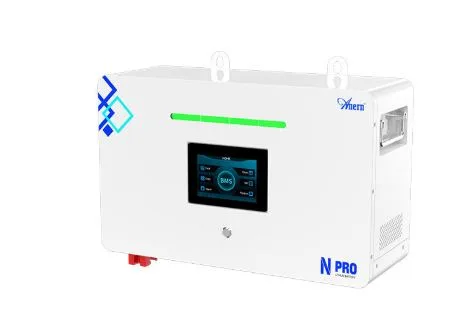Why 24V Lithium Ion Battery Powers Commercial Solar?
In an era where U.S. commercial energy costs have surged by 23% since 2021 and grid outages have increased threefold, businesses face unprecedented energy challenges. While commercial solar installations offer a promising solution, capturing and utilizing this clean energy efficiently remains a critical challenge. Enter 24v lithium ion battery – the transformative technology revolutionizing commercial solar energy storage. These advanced systems deliver up to 40% cost savings compared to traditional grid dependency while providing unmatched reliability through 6,000+ cycle lifespans. By bridging the gap between solar generation and consumption, 24V lithium-ion batteries enable true energy independence, peak demand management, and scalable power solutions for growing businesses. This article explores why 24V lithium-ion technology has become the cornerstone of modern commercial solar installations, examining its technical advantages, cost benefits, and practical implementation strategies.
The Commercial Energy Crisis: Why Solar Needs Smart Storage
Commercial enterprises across the United States face mounting pressure from escalating energy costs, with many businesses seeing their operational expenses surge due to grid dependency. While solar adoption offers a pathway to energy independence, its inherent intermittency poses significant challenges. Sunlight availability varies throughout the day, and peak solar generation often misaligns with periods of highest energy demand. This misalignment, coupled with weather-related fluctuations, can leave businesses vulnerable to costly demand charges and reliability issues.
Traditional lead-acid batteries, once the standard for energy storage, now represent a financial burden due to their limited lifespan, high maintenance requirements, and inefficient energy conversion. These outdated systems typically require replacement every 3-5 years, creating recurring capital expenses that diminish solar investment returns. Energy storage systems have emerged as the critical link in maximizing solar ROI, enabling businesses to capture excess daytime generation for use during peak rate periods or cloudy days.
The transition to 24V systems represents a strategic voltage choice for commercial applications, offering an optimal balance between current handling capacity and installation flexibility. This voltage standard has become increasingly prevalent as it allows for longer wire runs with minimal power loss, reduced installation costs, and seamless integration with existing commercial electrical infrastructure. By bridging the gap between generation and consumption, modern 24V storage solutions transform intermittent solar power into a reliable, continuous energy source that businesses can depend on.
24V Lithium Ion Batteries: Technical Edge for Commercial Use
The 24V architecture has emerged as the sweet spot for commercial solar applications, striking an optimal balance between power delivery and system complexity. Leading manufacturers like Anern have pioneered LiFePO4 chemistry solutions that dominate the market due to their inherent stability, longer lifespan, and enhanced safety profile. The 24V configuration allows for efficient power transmission while maintaining manageable current levels, reducing wire gauge requirements and installation costs compared to 12V systems. When scaling commercial installations, 24V systems require fewer parallel connections than 12V alternatives, simplifying system design while offering superior reliability. Unlike 48V systems that may require specialized equipment and expertise, 24V solutions integrate seamlessly with standard commercial electrical infrastructure and widely available solar components. This voltage standard also enables longer cable runs with minimal power loss, making it ideal for larger commercial spaces where battery banks may be positioned away from solar arrays and load centers. The combination of 24V architecture with LiFePO4 chemistry delivers the ideal mix of safety, efficiency, and practical implementation that commercial installations demand.
5 Advantages Driving Commercial Adoption
The cost efficiency of 24V lithium-ion batteries presents a compelling business case despite higher upfront investments. While initial costs may be 30-40% higher than lead-acid alternatives, the extended lifespan eliminates replacement cycles, reducing total ownership costs by up to 60% over a decade. Maintenance requirements drop dramatically, with no water topping, terminal cleaning, or regular testing needed, saving both labor and operational expenses.
The superior cycle life of these systems transforms energy storage economics. Modern 24V lithium-ion batteries maintain consistent performance through 6,000+ cycles at 80-90% depth of discharge, compared to lead-acid’s 1,500 cycles at 50% depth. This translates to approximately 15-20 years of reliable service, maximizing the return on solar investments while providing predictable energy costs.
Space optimization becomes a crucial advantage in commercial settings. The high energy density of lithium-ion technology requires only one-third the installation footprint of traditional systems. Modular designs enable seamless capacity expansion without redesigning existing infrastructure, supporting business growth while maintaining system efficiency.
During demand peaks, 24V lithium-ion systems deliver unwavering performance. The chemistry maintains stable voltage even under heavy loads, ensuring critical operations continue uninterrupted. Advanced battery management systems provide instantaneous switchover during grid outages, protecting sensitive equipment and maintaining productivity.
Environmental compliance and safety features position these systems at the forefront of sustainable energy storage. LiFePO4 chemistry eliminates toxic materials and rare earth elements, while built-in protections against thermal events ensure safe operation. The extended lifespan and recyclability of components align with corporate sustainability goals and environmental regulations, future-proofing commercial investments in renewable energy.
Implementing Your 24V Lithium-Ion Solar Storage System
Step 1: Energy Audit & Sizing
Begin with a comprehensive energy audit to determine your facility’s exact power requirements. Track hourly consumption patterns over at least one month using smart meters or monitoring devices. Focus on identifying peak demand periods and baseline loads to accurately size your storage system. Professional energy auditors can provide detailed load assessments using thermal imaging and power quality analyzers to detect inefficiencies.
Step 2: Battery Selection Criteria
When evaluating battery options, prioritize LiFePO4 chemistry for its superior safety profile and longevity in commercial applications. Compare warranty terms, ensuring coverage extends beyond 10 years with guaranteed capacity retention. Verify UL certification and compliance with local building codes. Calculate total cost of ownership across the system’s lifespan, factoring in replacement costs and maintenance requirements.
Step 3: Solar Integration & Installation
Select hybrid inverters specifically designed for 24V systems, ensuring compatibility with your existing or planned solar array. Implementation requires proper cable sizing to minimize voltage drop over longer runs. Install disconnect switches and overcurrent protection devices at key points. Ground fault protection and surge suppression systems must be integrated according to NEC requirements.
Step 4: Monitoring & Maintenance
Deploy advanced battery management systems with remote monitoring capabilities to track real-time performance metrics. Schedule quarterly visual inspections of connections and thermal imaging scans. Implement automated alerts for capacity degradation, temperature anomalies, or charging irregularities. Maintain detailed performance logs to optimize system efficiency and predict maintenance needs proactively.
Investing in Sustainable Energy Independence
The integration of 24V lithium-ion batteries has fundamentally transformed commercial solar installations from intermittent power sources into reliable, cost-effective energy solutions. These advanced storage systems deliver measurable advantages that directly impact bottom-line results – from 40% reductions in energy costs to 15-20 years of consistent performance without replacement. For businesses facing escalating energy costs and grid instability, the transition to 24V lithium-ion storage represents more than an operational upgrade; it’s a strategic investment in energy independence and sustainable growth. As commercial energy demands continue to rise and grid reliability becomes increasingly uncertain, early adopters of this technology gain a significant competitive advantage. The time to act is now – implementing a 24V lithium-ion storage solution not only protects against current energy challenges but positions your business as a leader in sustainable energy practices while securing long-term operational resilience.





